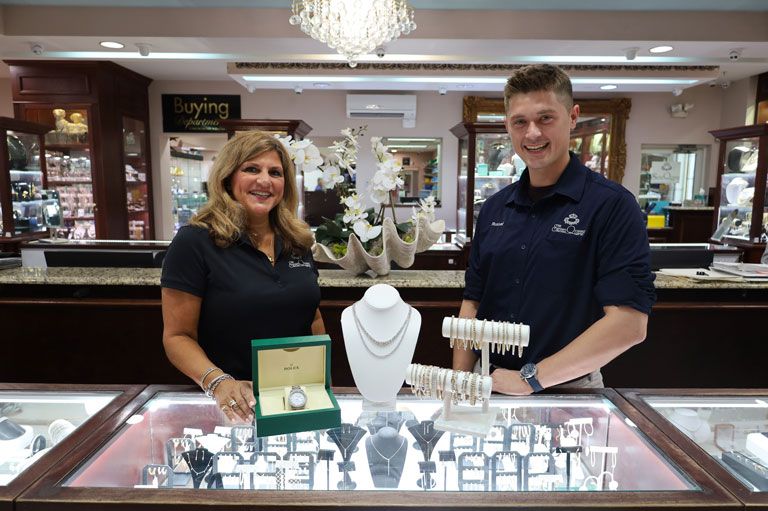This rare pair of individual turtle soup, or terrapin, ramekins unites the artistry of Villeroy & Boch pottery with the refinement of Graff, Washbourne & Dunn sterling silver, creating a quintessential Gilded Age table service piece. Produced between 1874 and 1909 in Mettlach, Wallerfangen, the earthenware bowls reflect the high-quality craftsmanship for which Villeroy & Boch was celebrated in the late 19th century, while the sterling mounts add a layer of American luxury and formality.
Each ramekin is formed in rich glazed pottery with subtle coloration and elegant shaping, perfectly sized for the traditional individual service of turtle or terrapin soup, a celebrated delicacy of fine 19th‑century dining. As expected with pieces of this age, the pottery shows some natural crazing, which is consistent with over a century of history and does not detract from their display or charm. The bowls are fitted with sterling silver holders and handles crafted by Graff, Washbourne & Dunn, pattern number 2560, which frame the pottery in gleaming silver and make them easy to present at the table. The domed sterling lids are topped with charming miniature silver turtles, a playful and symbolic nod to the delicacy once served within. These whimsical finials elevate the set from functional serving ware to a true conversation piece, perfectly capturing the Gilded Age passion for detail and thematic dining accessories.
This pairing of European ceramic tradition and American sterling mounts reflects the transatlantic elegance of the era, when formal dining combined the best of international artisanship. The Mettlach pottery bodies provide refined color and durability, while the sterling holders and lids catch the light with understated opulence. The delicate silver turtles serve as a delightful finishing touch, a subtle emblem of culinary tradition and luxury dining.
Highly collectible for both Mettlach enthusiasts and American silver collectors, this set of two terrapin ramekins embodies a dining ritual that has largely disappeared. Their rare survival, along with the gentle patina and expected pottery crazing, offers a tangible connection to an era when even an individual soup course was an opportunity to showcase artistry, craftsmanship, and social prestige.



